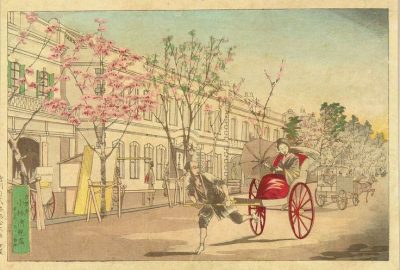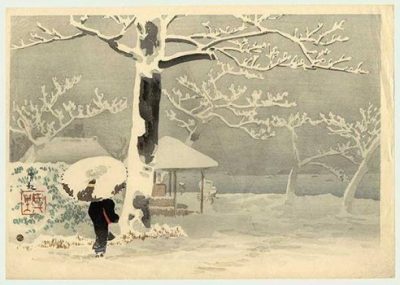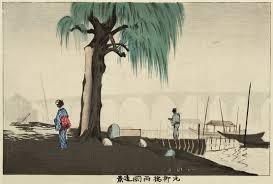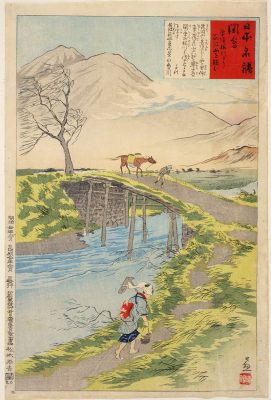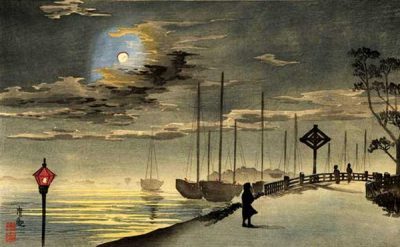Kobayashi Kiyochika the Japanese Meiji Artist: Personal Tragedy and Early Life
Lee Jay Walker
Modern Tokyo Times
The Japanese artist Kobayashi Kiyochika (1847-1915) belongs to a very intriguing period in Japan. This is based on the Meiji Restoration of 1868 and the various convulsions and changes that revolutionized this nation. Therefore, despite Kiyochika fighting on the wrong side of history during the Boshin War (1868), this reality never hindered him in the future because he would leave a lasting legacy in the field of ukiyo-e during the Meiji Era (1868-1912).
Kiyochika understood tragedy at an early age because the Great Ansei earthquake killed between 7,000 and 10,000 people in 1855. Luckily for his family, despite the family home being destroyed all members survived this tragic event. Yet, death and destruction at such an early age meant that the power of nature – and frailty of life – meant his early childhood was impacted.
On top of this, his father died in 1862 and this surprisingly led to him becoming the head of the family home. After all, he was the youngest of nine children – and given his relatively young years – then it seems surprising that he became the head of the household. Sadly, for Kiyochika, his mother would pass away in 1873. Therefore, fighting on the wrong side of history to both parents passing away at a relatively young age, and the memories of the brutal Great Ansei earthquake, meant that he witnessed many tragic events.
It is known that Kiyochika mixed with established artists including Kawanabe Kyosai and Shibata Zeshin in the 1870s. By the middle of this decade, Kiyochika focused on modernizing aspects of the Meiji Era and how these changes impacted on Tokyo. At the same time, aspects of Western-style art and ideas would further enhance his artistic soul.
I state in another article about Kiyochika,“Ironically, despite supporting the side of the Shogunate, it would be the impact of the Meiji era that would shape his future. The middle of the 1870s saw enormous personal development for Kobayashi. This notably applies to meeting the English cartoonist and painter Charles Wirgman, studying photography, and plying his trade in the field of art.”
On the Smithsonian website it says “When Kobayashi Kiyochika (1847–1915) returned to his birthplace, which he had known as Edo, in 1874, he found a city transformed. Renamed Tokyo (Eastern Capital), it was filled with railroads, steamships, gaslights, telegraph lines, and large brick buildings—never-before-seen entities that were now ingrained in the cityscape.
Kiyochika by the age of 30 knew that art would be the mainstay of his future because this enabled him to survive the travails of his early life. Hence, while bitterness or not taking a major career gamble would have been the norm for many individuals, this can’t be said about this intriguing artist. Instead, he developed a mindset that was open to change based on the circumstances that he faced.
http://www.si.edu/Exhibitions/Details/Kiyochika-Master-of-the-Night-5134 – For further details about the exhibition then please check this website.
https://twitter.com/smithsonian
Modern Tokyo News is part of the Modern Tokyo Times group
http://moderntokyotimes.com Modern Tokyo Times – International News and Japan News
http://sawandjay.com Modern Tokyo Times – Fashion
https://moderntokyonews.com Modern Tokyo News – Tokyo News and International News
http://global-security-news.com Global Security News – Geopolitics and Terrorism
PLEASE JOIN ON TWITTER
https://twitter.com/MTT_News Modern Tokyo Times
PLEASE JOIN ON FACEBOOK
